
Barua is a common Assamese surname shared by the Assamese communities much like Aroras of Punjab.

Assamese literature is the entire corpus of poetry, novels, short stories, plays, documents and other writings in the Assamese language. It also includes the literary works in the older forms of the language during its evolution to the contemporary form and its cultural heritage and tradition. The literary heritage of the Assamese language can be traced back to the c. 9–10th century in the Charyapada, where the earliest elements of the language can be discerned.
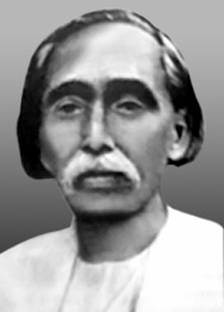
Padmanath Gohain Baruah (1871–1946) was the first president of Asam Sahitya Sabha and a prominent name in the early part of modern Assamese literature. He was a novelist, poet, dramatist of excellence, analyst and a thought provoking writer. Considering his towering personality and profound knowledge, he is regarded as the "Pitamaha" in Assamese literary world. In recognition of his outstanding contributions to the Assamese literature and society, the British government gave him Raibahadur title, a rare honour conferred for the first time to an Assamese person. He was also the first literary pensioner of Assam.
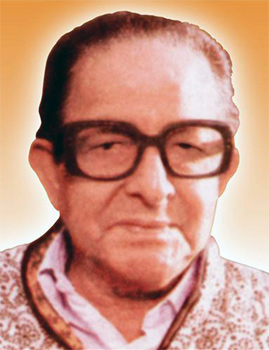
Nabakanta Barua was a prominent Assamese novelist and poet. He was also known as Ekhud Kokaideu. As Sima Dutta he wrote many poems in his early life.
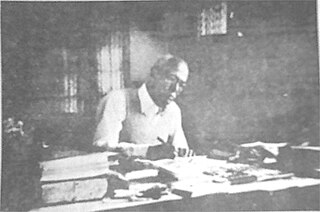
Nakul Chandra Bhuyan (1895–1968) was an Indian historian, playwright, essayist and a short story writer of Assamese language.

Orunodoi or Arunodoi was the first Assamese-language magazine published monthly from Sibsagar, Assam, in 1846. The magazine created a new era in the world of Assamese literature and gave birth to notable authors such as Anandaram Dhekial Phukan, Hemchandra Barua, Gunabhiram Barua, and Nidhi Levi Farwell. The magazine took the initiative of innovating the then Assamese dialect instead of borrowing words from other languages. The Assamese people got to know about the western world only through this magazine, which opened the gate to the modern literacy in Assam. It mainly included various news related to current affairs, Science, astrology, history and also trivia although Christianity was its main aim. The magazine's publishing ended when the printing press was sold in 1883.
Assamese is part of the easternmost group of the Indo-Aryan languages. History of Assamese literature can largely be classified into three periods, including: Early Assamese period, Middle Assamese period and, Modern Assamese.
Anandaram Dhekial Phukan (1829–1859) was one of the pioneers of Assamese literature in the Orunodoi era who joined in the literary revolution initiated by missionaries. He was remembered for his efforts in promoting the Assamese language. He played a major role in reinstating the Assamese language as the official language of Assam.

Nalini Bala Devi was an Indian writer and poet of Assamese literature, known for nationalistic as well as mystical poetry. She was awarded the Padma Shri by the Government of India in 1957 for her contribution to literature, and 1968 she won the Sahitya Akademi Award given by Sahitya Akademi for her poetry collection Alakananda. She is the first woman Assamese poet to be awarded with Padma Shri and the first lady to the chair the Assam Sahitya Sabha.
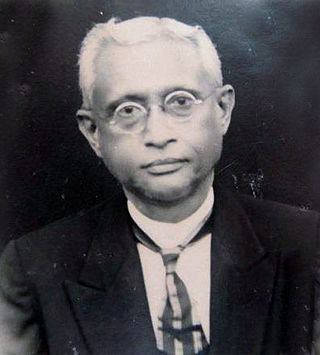
Chandradhar Barua was a writer, poet, dramatist and lyricist from Assam of Jonaki Era, the age of romanticism of Assamese literature. Barua was born at Jorhat, Assam on 15 October 1878. He was second president of the Asam Sahitya Sabha in 1918 held at Goalpara. He was the founder secretary of Asam Sahitya Sabha Patrika, an official journal of the Asam Sahitya Sabha established at 1927 and held in that position till 1936. He also represented India at the Round Table Conference held at London in 1930.
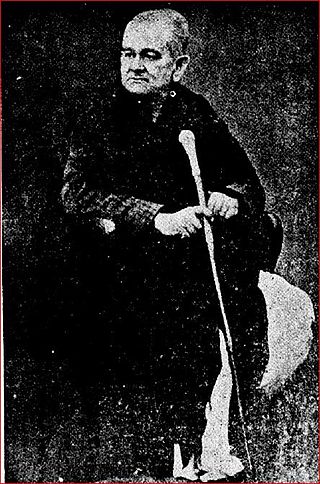
Jnanadabhiram Barua (1880-1955) was a notable Indian Assamese language writer, dramatist, translator, and barrister from Assam. He also participated in India's freedom struggle.

Hemchandra Goswami (1872–1928) was an Indian writer, poet, historian, teacher and a linguist from Assam in the early part of modern Assamese literature. He was the fourth president of the Asom Sahitya Sabha in 1920 held at Tezpur. He retired as Extra Assistant Commissioner in the British Assam.
Benudhar Rajkhowa (1872-1955) was a prominent writer, poet and dramatist from Assam. He was the president of the Asam Sahitya Sabha in 1926 held at Dhuburi district, Assam. When he was studying at Calcutta, he had done a pivot role for development of Asamiya Bhasa Unnati Sadhini Sabha, a literary organization from Assam. He was honoured with Rai Bahadur title by the ruling British government.

Kamalakanta Bhattacharya; 1853–1936) was a prominent essayist and poet belonged to the Oronodoi era of Assamese literature. He was born on 23 December 1853 in Gorehagi village, Biswanath Chariali, Sonitpur district, Assam. He was popularly known as 'Agnikobi'. Politically, he was strongly nationalistic. He opposed the introduction of Bengali as the official language of Assam in 1871. At the annual meeting of the Indian National Congress in 1886 in Calcutta, he participated as a delegate for Assam. In 1929 he sat as Secretary General of the Organization Culture Asam Sahitya Sabha ago. He was also the president of the Asam Sahitya Sabha in 1929 held at Jorhat district, Assam. He campaigned for the abolition of the box security regulations and promoted the education of women. He also participated in the swadeshi movement in 1905–06.
Satyanath Borah (1860–1925) was an Assamese grammarian, essayist and music composer. He write sometimes in the pen name of Ejon Asomiya. Bora participated in India's freedom struggle and also associated with the Jonaki and Usha magazine. He is the author of Gitabali, a book consisting of 28 modern Assamese song. Other literacy works of Bora are Sarathi, Kendra Sabha (1925), Chintakoli and Akash-rahasya, Jivanar omiya, His grammatical works include Bohol Byakoron, a book on the Assamese grammar.
Ananda Chandra Barua (1907–1983) was a writer, poet, playwright, translator, journalist and actor from Assam. He is popularly known as Bokulbonor Kobi in Assamese literacy society. He was honoured with, most notably the Padma Shri title and Sahitya Akademi award.
Bhubanmohan Baruah was a novelist, short story writer from Assam. He wrote many novels under the pen-name of Kanchan Baruah.
Sarat Chandra Goswami (1887-1944) was a prominent writer of Assam who enriched the Assamese literature with his short stories. Goswami was a founder member of Asam Sahitya Sabha and elected as a Secretary of the Sabha for the first time. He continued in the same post from 1920 to 1927.
Rai Bahadur Surya Kumar Bhuyan MBE (1892–1964) was a writer, historian, educator, social activist, storyteller, essayist, professor and a poet from Assam. He has written many books on ancient history, stories, essays, biographies, etc. in the world of Assamese literature. He presided over the Asam Sahitya Sabha (1953) held at Shillong. He was the elected member of Rajya Sabha during 1952–53, and was awarded the Padma Shri by the Government of India in 1956.

Professor Maheswar Neog was an Indian academic who specialised in the cultural history of the North East India especially Assam, besides being an Assamese-language scholar and poet. He was a top Indologist, and his work covers all disciplines of Indian studies, folk-lore, language, dance, history, music, religion, drama, fine arts, paintings, historiography and hagiography, lexicography and orthography, epigraphy and ethnography. His research includes multi-dimensional features of Vaishnava renaissance in Assam through Srimanta Sankardev, Madhabdev, Damodardev, Haridev, Bhattadev and other Vaishnava saints of Assam.












